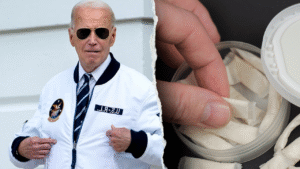Health officials have reported an increase in cases of Hand, foot and mouth disease (HFMD) in some parts of the U.S.
The viral illness is highly contagious and affects mostly children under 5, but individuals of all ages can be infected, according to the Centers for Disease Control and Prevention (CDC).
In Virginia, the Fairfax County Health District has issued an alert about six HFMD outbreaks this year, primarily impacting children aged 4 and younger.
The U.S. Virgin Islands Department of Health has confirmed 189 cases of HFMD in St. Thomas, including a potentially fatal case involving a toddler.
The Pan American Health Organization has urged member states to enhance prevention and control measures for HFMD, especially in children, due to their vulnerability and the risk of serious complications in the central nervous system.
Tina Q. Tan, M.D., an attending physician at the Ann & Robert H. Lurie Children’s Hospital of Chicago and president of the Infectious Diseases Society of America, mentioned that HFMD is more common during the summer and early fall when the weather is warmer.
According to Tan, the viruses that typically cause HFMD are the Coxsackie and Enteroviruses.
Spread and symptoms
HFMD can spread through viral particles released while sneezing, coughing, or talking, as per the CDC.
People can also transmit the virus by touching contaminated surfaces or objects. In cases with blistering rashes, the fluid from the blisters can also spread the virus.
Tan noted that HFMD is highly contagious and can rapidly spread in daycare and school environments. People are most contagious during the initial days of the illness, but the virus can also be transmitted through stool for several weeks.
Infants and children can attend daycare and school as long as they are fever-free, feel well enough to drink and engage in activities, and do not have open lesions or excessive drooling when experiencing mouth sores, according to Tan.
The primary symptoms of HFMD include fever, skin rash, and painful, blistering mouth sores, as outlined by the CDC.
Treatment and prevention
Most individuals recover from HFMD without treatment within seven to 10 days.
Over-the-counter medications can help manage pain and fever. It is also recommended to consume plenty of fluids to prevent dehydration, according to the CDC.
Pregnant women should seek medical attention if they contract HFMD, as advised by the CDC.
Tan highlighted that the most common complication of HFMD is dehydration due to painful mouth lesions that hinder adequate fluid intake.
Individuals should seek medical care if they feel discomfort with their symptoms worsening or if there are changes in mental status, Tan suggested.
Preventive measures for HFMD include frequent handwashing with soap and water and cleaning and disinfecting common surfaces and shared items like doorknobs and toys.
Currently, there is no vaccine for HFMD in the U.S.





